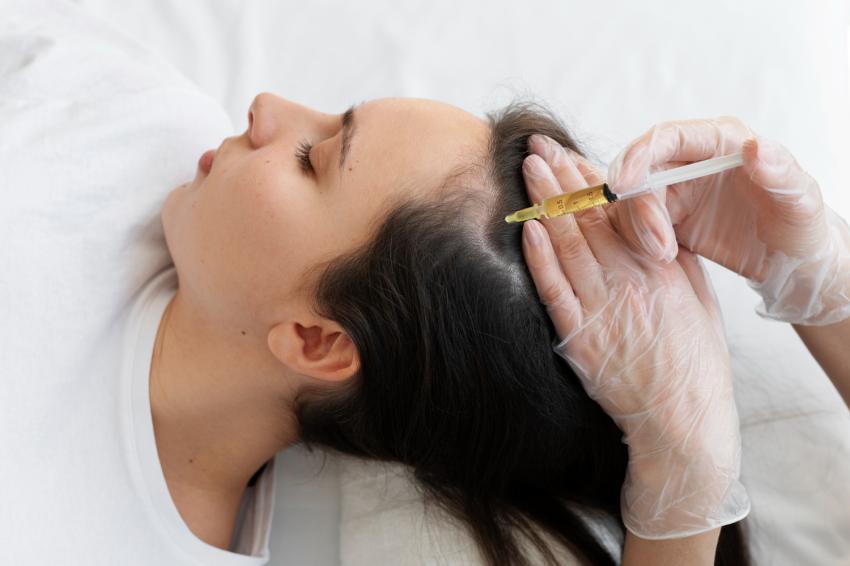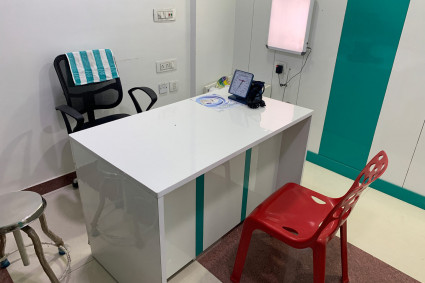
PRP hair treatment uses your own blood to help hair grow. It's safe and works for most people. About 60-80% of patients see better hair growth within 3-6 months. The treatment needs multiple sessions that cost $400-$800 each. Side effects are mild and rare. PRP works best for people with early hair loss, not complete baldness.
Introduction
Hair loss affects millions of people in Australia. Studies show that 50% of men lose hair by age 50. About 25% of women also experience hair thinning by this age.
If you live in Sydney and notice your hair getting thinner, you're not alone. Many people are looking for safe ways to grow their hair back. One popular treatment is called PRP hair therapy.
PRP stands for Platelet-Rich Plasma. This treatment uses your own blood to help hair grow. It sounds scary, but it's actually quite safe. Many Sydney clinics now offer this treatment.
But does PRP really work? Is it safe for everyone? How much does it cost? This guide will answer all your questions about PRP hair treatment Sydney.
What is PRP Hair Treatment?
PRP uses platelets from your blood to treat hair loss. Doctors take your blood, spin it in a machine, then inject it into your scalp. This treatment helps weak hair follicles grow stronger hair.
Understanding the Science Behind PRP
PRP treatment uses platelets from your blood to help hair grow. Platelets contain growth factors that heal damaged tissue.
During treatment, doctors take your blood and spin it fast. This separates the platelets from other blood parts. The result is plasma with lots of healing factors.
The doctor injects this plasma into your scalp. The growth factors wake up sleeping hair follicles. This helps thin hair grow thicker and stronger.
How PRP Differs from Other Hair Treatments
PRP only uses parts of your own blood. It doesn't use drugs or chemicals like other treatments.
This makes PRP safe for most people. You can't be allergic to your own blood. Your body won't reject the treatment.
PRP doesn't need surgery like hair transplants. There are no cuts or stitches. You can go back to work the same day.
The PRP Hair Treatment Process in Sydney
The treatment takes 60-90 minutes from start to finish. A doctor draws blood, spins it, then injects it into your scalp. Most people feel only mild discomfort during the injections.
Initial Consultation and Assessment
Your PRP journey starts with a consultation. A qualified doctor will examine your scalp and hair. They'll ask about your medical history and medications.
The doctor will check what type of hair loss you have. They'll also see if you're a good candidate for PRP treatment.
Not everyone is right for PRP therapy. The doctor will explain if this treatment can help you.
The Treatment Procedure Step-by-Step
The actual PRP treatment takes about 60-90 minutes. First, the doctor draws blood from your arm. This is just like getting a blood test.
The blood goes into a special machine called a centrifuge. This machine spins very fast to separate different parts of your blood.
After spinning, the doctor collects the platelet-rich plasma. This golden liquid contains concentrated healing factors.
Next, the doctor injects the PRP into your scalp. They use very thin needles to target thinning areas. The injection process takes about 15-20 minutes.
What to Expect During Treatment
Most patients say the treatment feels comfortable. You might feel some pressure during the injections. Many clinics use numbing cream to reduce any discomfort.
The blood draw feels like a regular blood test. The scalp injections might cause mild stinging. This feeling goes away quickly after treatment.
You can drive yourself home after the procedure. There's no need for someone to pick you up.
Safety Profile of PRP Hair Treatment
PRP is safe because it uses your own blood. Side effects are rare and usually mild. Most people have no problems after treatment.
Clinical Safety Data
PRP hair treatment has an excellent safety record. It's been used safely for many years in different medical fields.
The treatment is very safe because it uses your own blood. This means there's almost no risk of infection or allergic reactions.
Serious side effects from PRP are extremely rare. Most people have no problems at all after treatment.
Common Side Effects and Risk Factors
The most common side effects are very mild. You might have some tenderness where the injections were given. This usually goes away within 1-2 days.
Some people get small bruises at the injection sites. These fade within a few days. You might also have a mild headache after treatment.
Very rarely, some patients notice more hair falling out initially. This is actually a good sign that the treatment is working.
Who Should Avoid PRP Treatment
Some people should not get PRP treatment. This includes people with active scalp infections or certain blood disorders.
If you take blood thinning medications, you might not be a good candidate. Pregnant and nursing women should wait until later.
People with autoimmune diseases or those getting chemotherapy should avoid PRP. Your doctor will review your medical history to make sure PRP is safe for you.
Effectiveness of PRP Hair Treatment
Studies show 60-80% of people see better hair after PRP. Most notice thicker hair within 3-6 months. The treatment works best on mild hair loss, not baldness.
Clinical Evidence and Success Rates
Many scientific studies show that PRP works for hair loss. Research shows that 60-80% of patients see improvement.
One large study looked at 100 patients who got PRP treatment. After four sessions, hair count increased by 33% on average.
Most people notice their hair getting thicker and stronger. Hair loss often slows down or stops completely.
Factors Affecting Treatment Success
Several things affect how well PRP works for you. Younger patients usually get better results than older ones.
The amount of hair loss also matters. PRP works best for people with mild to moderate thinning. It doesn't work as well for complete baldness.
Your overall health affects results too. People who eat well and exercise often see better outcomes.
Realistic Expectations and Timeline
PRP doesn't work overnight. Most people start seeing changes after 3-4 months. The best results usually show up after 6-12 months.
Don't expect dramatic changes right away. PRP gradually makes your hair thicker and stronger. It's better at improving existing hair than creating new hair.
The treatment works best for maintaining and improving hair you already have. It's not magic, but it can make a real difference.
Cost of PRP Hair Treatment in Sydney
Each PRP session costs $400-$800 in Sydney. You need 3-4 treatments to start, then yearly touch-ups. Total first-year cost is $1,200-$3,200 for most people.
Average Pricing Structure
PRP treatment costs vary between Sydney clinics. Most charge between $400-$800 per session. Some premium clinics charge over $1,000.
You'll need multiple treatments to see results. Most doctors recommend 3-4 sessions at first. These are spaced 4-6 weeks apart.
After the initial treatments, you'll need maintenance sessions. These happen every 6-12 months. The total first-year cost is usually $1,200-$3,200.
Factors Influencing Cost
Several things affect how much you'll pay for PRP. Clinics in the CBD usually charge more than suburban ones.
The doctor's experience and qualifications also matter. Specialists like dermatologists often charge higher fees.
Some clinics use advanced equipment that costs more. Others offer package deals that reduce the per-session price.
Comparing Value Proposition
PRP costs less than hair transplant surgery. It also avoids the daily expense of hair loss medications.
The treatment has minimal downtime compared to surgery. You can return to work the same day.
However, you need to factor in multiple sessions and ongoing maintenance. This adds up over time.
Choosing the Right Clinic in Sydney
Pick a clinic with trained doctors who do PRP treatments. Ask to see photos of past results. Avoid clinics that promise perfect results for everyone.
Credentials and Qualifications to Look For
Choose a clinic with qualified medical doctors. Look for doctors trained in dermatology or cosmetic medicine.
Make sure the practitioner has specific PRP training. Ask how many PRP procedures they've done.
Check if the clinic is registered with professional medical bodies. This ensures they follow proper safety standards.
Questions to Ask During Consultation
Ask about the doctor's experience with PRP hair treatment. Find out their success rates with patients like you.
Ask to see before and after photos of previous patients. Make sure these photos show realistic results.
Ask about the specific PRP method they use. Different techniques can give different results.
Red Flags to Avoid
Be careful of clinics that promise guaranteed results. PRP results vary from person to person.
Avoid practitioners without proper medical training. Don't choose based on price alone.
Be wary of high-pressure sales tactics. Good clinics will give you time to think about your decision.
Combining PRP with Other Hair Loss Treatments
Doctors often use PRP with other treatments for better results. This might include laser therapy or hair growth medicines. Tell your doctor about all treatments you use.
Complementary Treatment Options
Many doctors combine PRP with other hair loss treatments. Low-level laser therapy can work well with PRP.
Some patients also use topical treatments like minoxidil. Special shampoos and supplements might help too.
The key is timing these treatments properly. Your doctor will create a plan that works for you.
Timing and Sequencing Treatments
If you're using multiple treatments, timing matters. Most doctors start with PRP first. Then they add other treatments based on your response.
For people considering hair transplant surgery, PRP can help before and after. It can strengthen existing hair and improve healing.
Potential Interactions and Considerations
Most hair loss treatments work well together. However, some combinations need careful planning.
If you take blood thinners, you might need to adjust your medication schedule. Some topical treatments might need to be stopped temporarily.
Always tell your doctor about all treatments you're using. This helps avoid any problems.
Patient Experiences and Testimonials
Most Sydney patients see thicker hair after PRP treatment. Results come slowly over several months, not right away. People with realistic goals are happiest with their results.
Real Patient Outcomes in Sydney
Many Sydney patients report good results with PRP treatment. Sarah from Bondi noticed less hair in her brush after six months.
Michael from North Sydney said his hair became thicker and healthier looking. He didn't get a lot of new hair, but existing hair improved.
These experiences match what doctors expect from PRP treatment. Most improvement comes from strengthening existing hair.
Managing Expectations Based on Real Results
Patients who follow their treatment schedule get better results. Those who miss appointments often see less improvement.
It's important to have realistic expectations before starting treatment. PRP improves hair quality more than quantity.
Long-term Satisfaction Rates
Patients with realistic expectations usually feel satisfied with PRP results. Those expecting dramatic regrowth often feel disappointed.
Good candidate selection is key to satisfaction. People with mild to moderate hair loss tend to be happiest.
Some patients wish they had started treatment earlier. PRP works best when you still have hair to improve.
Maintenance and Long-term Care
Don't wash your hair for 2 days after PRP treatment. You need touch-up treatments every 6-12 months. Good diet and low stress help PRP work better.
Post-Treatment Care Instructions
After PRP treatment, don't wash your hair for 24-48 hours. This lets the plasma absorb into your scalp.
Avoid heavy exercise for 2-3 days after treatment. Don't swim or spend too much time in the sun.
Avoid alcohol and smoking for a few days. These can interfere with healing.
Follow-up Treatment Schedule
Most people need 3-4 initial treatments spaced 4-6 weeks apart. After that, maintenance treatments happen every 6-12 months.
Your specific schedule depends on how you respond to treatment. Some people need more frequent sessions.
Regular maintenance helps keep your results long-term. Skipping sessions can lead to losing improvements.
Lifestyle Factors for Optimal Results
Eating a healthy diet supports hair growth. Make sure you get enough protein, vitamins, and minerals.
Managing stress is important for hair health. Chronic stress can work against PRP benefits.
Regular exercise and good sleep also help. These lifestyle factors support overall hair health.
Alternative Hair Loss Treatments in Sydney
Hair transplant surgery gives bigger changes but costs more. Medicine like minoxidil works but needs daily use. Each treatment has good and bad points.
Comparing PRP to Other Options
Hair transplant surgery gives more dramatic results than PRP. However, it costs more and requires longer recovery time.
Medications like finasteride and minoxidil can work well. But they may cause side effects and need daily use.
Laser therapy and scalp micropigmentation offer different approaches. Each has its own pros and cons.
When PRP May Not Be the Best Choice
PRP might not be right for people with extensive baldness. Hair transplant surgery might work better for them.
People wanting immediate, dramatic results might prefer other treatments. prp hair treatment takes time to show effects.
Some medical conditions make PRP unsuitable. Your doctor will help determine the best option for you.
Combination Approach Benefits
Many doctors recommend using multiple treatments together. This can give better results than any single treatment.
Combining PRP with other therapies addresses hair loss from different angles. However, this approach costs more.
The combination approach requires careful coordination between treatments. Your doctor will create a personalized plan.
Conclusion
PRP hair treatment in Sydney is safe and effective for many people. It uses your own blood to naturally stimulate hair growth.
Clinical studies show that 60-80% of patients see improvement. The treatment has minimal side effects and good long-term safety.
Success depends on choosing the right candidate and having realistic expectations. PRP works best for people with mild to moderate hair loss.
The cost is significant but often less than surgery. Multiple sessions are needed for best results.
Choosing a qualified practitioner is crucial for safety and effectiveness. Look for doctors with proper training and experience.
PRP offers a natural, minimally invasive option for hair restoration. While not right for everyone, it can help many people achieve thicker, healthier hair.
If you're considering PRP treatment, consult with a qualified practitioner. They can determine if this treatment is right for your specific situation.
With proper care and realistic expectations, PRP can be an effective tool against hair loss. It offers hope for fuller, healthier hair and renewed confidence.




